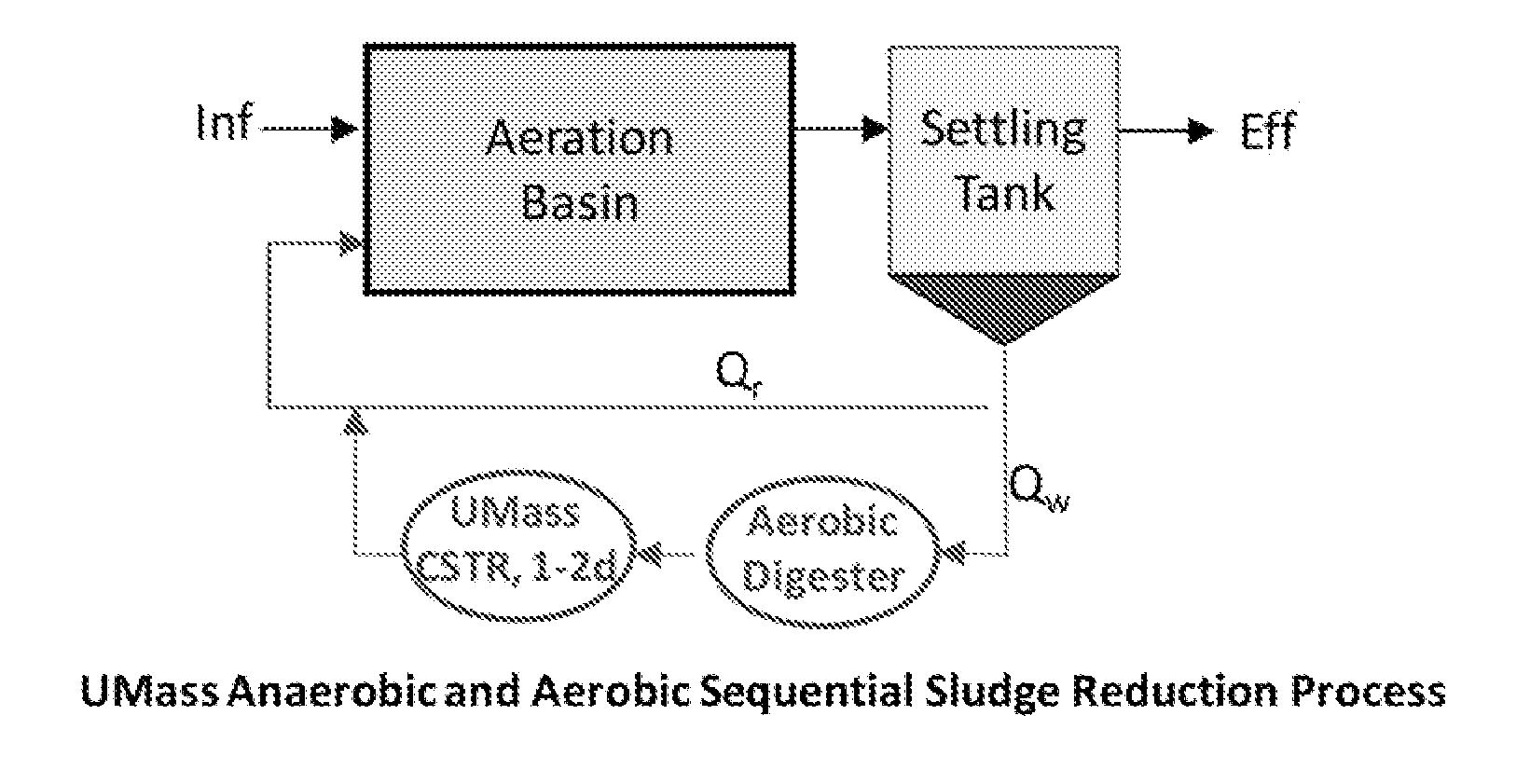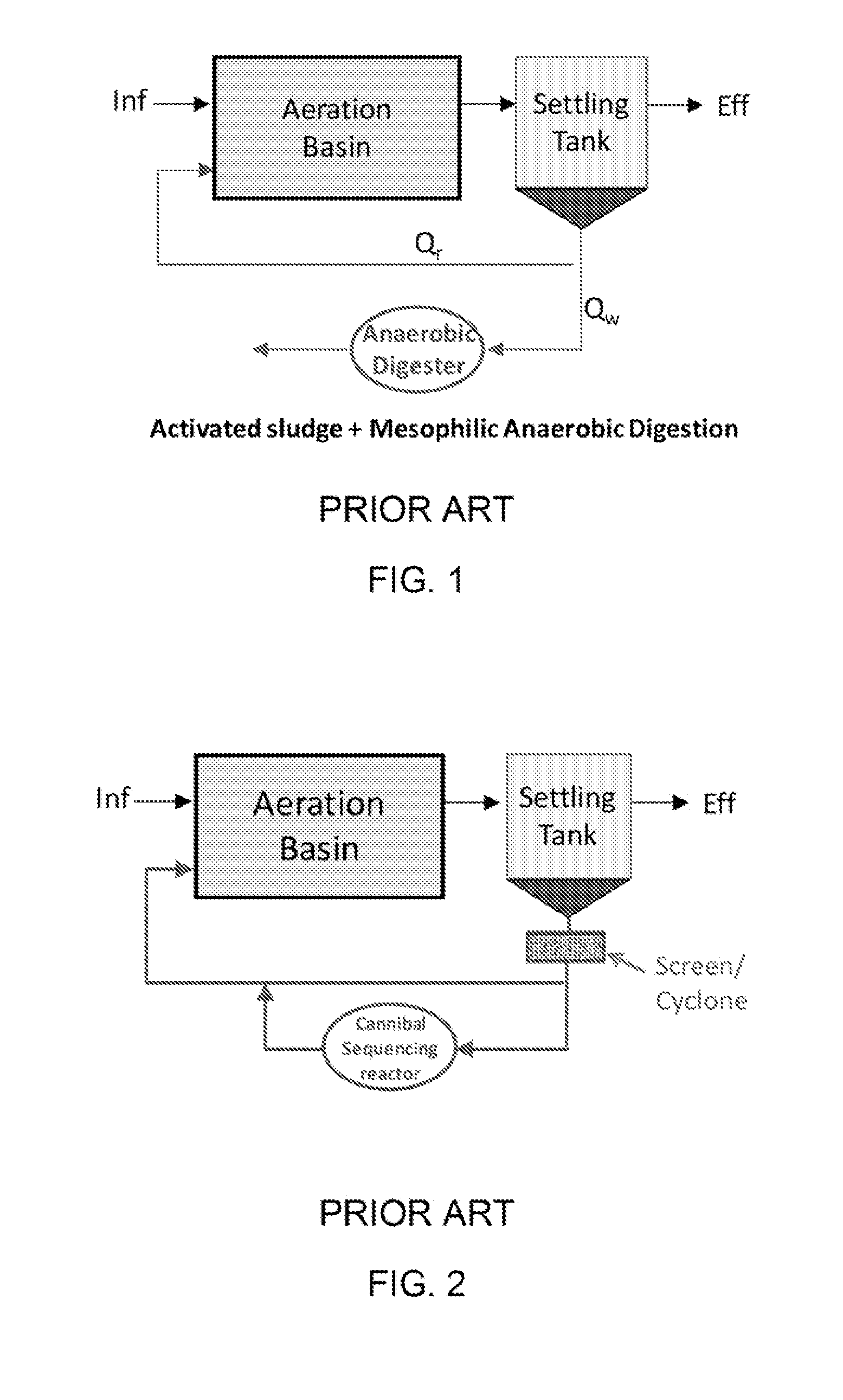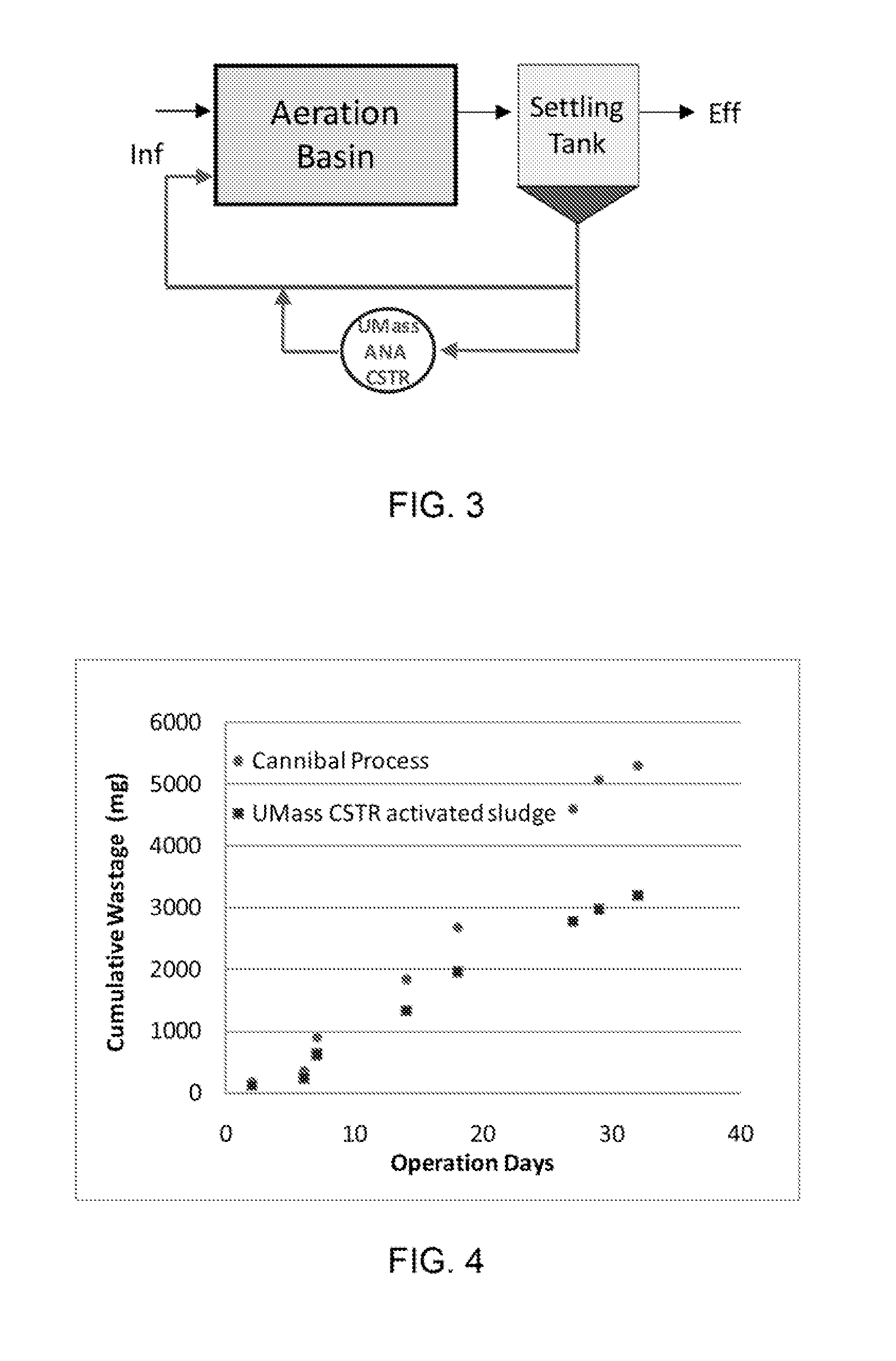Method to reduce sludge generation in wastewater treatment systems
a wastewater treatment system and sludge technology, applied in the field of wastewater treatment systems, can solve the problems of reducing the phosphorus content of sludge, the most expensive process in the operation of wastewater treatment plants, and the microbial byproduct of biological wastewater treatment, so as to reduce the phosphorus conten
- Summary
- Abstract
- Description
- Claims
- Application Information
AI Technical Summary
Benefits of technology
Problems solved by technology
Method used
Image
Examples
Embodiment Construction
[0042]The invention relates to the technology for reducing sludge generation in wastewater treatment plants. In one embodiment, the systems and methods of the invention leads to extremely low sludge yield, thus allowing significantly reduced sludge wasting from the wastewater treatment systems. The systems and methods of the invention also permit reduction of nitrogen and phosphorous in effluent without the addition of external organic carbon or without requirement of a complex reactor design such as pre-denitrification with mixed liquor recirculation. The systems and methods of the invention also provide for generation of hydrogen from the anaerobic bioreactor which can be used as an energy source for the facility.
[0043]In another aspect, the systems and methods of the invention feature an external anaerobic hydrolysis and fermentation bioreactor that treats excess sludge and returns it back to the main wastewater reaction basin. The tank reactor is operationally within the loop of...
PUM
| Property | Measurement | Unit |
|---|---|---|
| Temperature | aaaaa | aaaaa |
| Content | aaaaa | aaaaa |
| Time | aaaaa | aaaaa |
Abstract
Description
Claims
Application Information
 Login to View More
Login to View More - R&D
- Intellectual Property
- Life Sciences
- Materials
- Tech Scout
- Unparalleled Data Quality
- Higher Quality Content
- 60% Fewer Hallucinations
Browse by: Latest US Patents, China's latest patents, Technical Efficacy Thesaurus, Application Domain, Technology Topic, Popular Technical Reports.
© 2025 PatSnap. All rights reserved.Legal|Privacy policy|Modern Slavery Act Transparency Statement|Sitemap|About US| Contact US: help@patsnap.com



